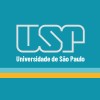
New Inflammation Markers for Distinguishing Uterine Adenomyosis and Leiomyoma
AdenomyosisLeiomyoma1 moreBoth pelvic masses and preoperative diagnosis of them have still continued as an important investigation subject. It is important to discriminate the diagnoses of leiomyoma and adenomyosis before operation especially among infertile patients. Neoplasms can alter systemic or local immune response in their originating area.Neutrophil to lymphocyte ratio (NLR) and platelet to lymphocyte ratio (PLR) can be readily determined by using of complete blood counter test (CBC). A high NLR has been shown in systemic inflammation, some gynecologic and gastrointestinal cancers and some cardiovascular diseases. The investigators aim to investigate using new inflammation markers, NLR and PLR, whether they are useful to discriminate between adenomyosis and leiomyoma. As far as is known, there have been no previous reports about the association among NLR, PLR, adenomyosis and leiomyoma.

Investigation of Vascular Inflammation in Migraine Using Molecular Nano-imaging and Black Blood...
Migraine HeadacheMigraine Without AuraThe investigators aim to investigate inflammation of cranial and meningeal arteries during pharmacologically induced migraine attacks, using ultrasmall superparamagnetic iron oxide (USPIO) nanoparticles and black blood imaging (BBI) MRI.

Airway Inflammatory Profile Among Cleaning Workers From Different Workplaces
InflammationWork Related Illnesses4 moreThere are consistent evidences through epidemiologic studies in different places, reinforced by occupational asthma records studies, that cleaning workers have a high risk in developing asthma. These risk determinants are not totally known. The air around the worker may have some higher and lower molecular weight with different concentration peaks from removed dust of the cleaning process and volatile substances from cleaning products. Cleaning activities may occur in different places. Although the relationship between rhinitis and asthma is already established, there are not many studies about occupational rhinitis-related work place. This study aimed to investigate airway inflammation and respiratory symptoms of cleaning workers from different workplaces.

APOA2 Gene, Diet, Inflammation and Gut Health
InflammationNutrients and chemicals in food are able to regulate expression of genetic elements. Gene-nutrient interaction in response to unhealthy diets can increase an individual's risk, shifting the individual from health toward the development of chronic disease. The apolipoprotein A2 (APOA2) gene may either put individuals at risk for or protect from obesity in the presence of certain fats in food. The main purpose of this four-week study is to examine diet induced gene-nutrient interaction, with a focus on gut health, gut microbiota and inflammation in individuals who have either the CC or the TT form within a specific variant of the APOA2 Gene. The (2) one-week study diets, one plant based and the other animal based are separated by a (1) week return to your regular habitual without probiotic or prebiotic food products.

The Effects of Liraglutide on Sudomotor Function and Inflammation in Type 2 Diabetes
Autonomic Nervous System DiseasesSweat Gland Diseases1 moreThe purpose of this study is to conduct an interventional, one year, randomized, double blind, placebo-controlled trial with Liraglutide in patients with type 2 diabetes (diabetes duration of >6 months and <10 years, HbA1c <10%) to evaluate its effects on the peripheral autonomic nervous system, as well as inflammatory markers, and measures of oxidative and nitrosative stress.

Pulmonary Effects of 100% Biodiesel Exhaust
InflammationAir pollution is a global environmental and health concern, contributing to onset and deterioration of respiratory and cardiovascular diseases. As climate change and dependence on diminishing fossil fuel supplies have taken center stage in political and scientific debates, renewable carbon-neutral fuels like biodiesel receive increasing attention. The most common biodiesel within the European Union, rapeseed oil methyl ester (RME) is perceived to be a "green fuel", as it is sustainable and of biological origin, and therefore is often predicted to be less harmful to human health. Whilst replacing petrodiesel with biodiesel may have advantageous ecological impacts, consequences to respiratory health remained largely unexplored. The purpose of the current study is to evaluate whether inhalation of 100% RME biodiesel exhaust would result in an acute airway inflammatory response in healthy human subjects, as shown previously following exposure to petrodiesel exhaust.

Airway Inflammation and Bronchial Hyperresponsiveness in Rhinitic Children With or Without Asthma...
RhinitisAsthma2 moreThis is a prospective observational study , to clarity the characteristics of airway inflammation, airway reactivity and airway resistance in rhinitic children with or without asthma and to explore the possible predictors in the progression of allergic rhinitis to asthma.

Exercise for Healthy Aging: The Impact of HIV and Aging on Physical Function and the Somatopause...
HIVInflammation3 moreThe primary objective of this proposal is to compare a moderate or high intensity exercise intervention to improve physical function in persons aging with Human Immunodeficiency Virus (HIV).

PREVALENCE OF Anti-CCP POSITIVITY AND SUBCLINICAL SIGNS OF INFLAMMATION IN PATIENTS WITH NEW ONSET...
Rheumatoid ArthritisNon-interventional, prospective, observational study to assess the relative risk of anti-CCP positive patients to develop (subclinical) signs of inflammation in accordance with early Rheumatoid Arthritis (RA) in a population without pre-classified RA but new1 onset of non-specific musculoskeletal (MSK) symptoms in general practices in Germany and subsequent 36 months follow-up by rheumatologists

The Role of Large Artery Plaque Imaging Features in Predicting Inflammation and Cognition
Cognitive ImpairmentCarotid Artery Plaque1 moreThe invesigators propose a clinical study on patients undergoing carotid surgery (endarterectomy). The invesigators will determine carotid artery imaging features associated with (1) vessel wall inflammation, (2) downstream brain inflammation, and (3) cognitive benefit from surgery. This project will uncover links between inflamed carotid plaque and downstream brain inflammation. The invesigators will also determine carotid plaque imaging features predicting cognitive benefit from carotid surgery.
